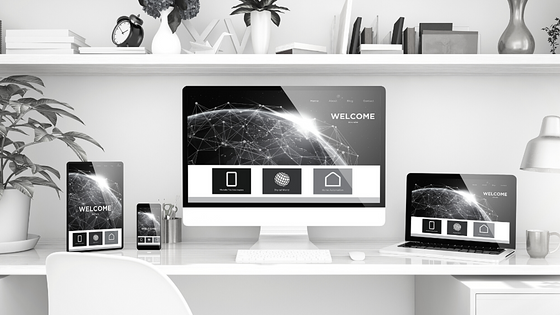Crippling staff shortages, transport issues, and the unpredictability of a broken supply chain means business owners are now looking at extended supply chain disruptions especially regarding IT devices such as laptops, tablets and peripheries.

The six primary factors we’ve identified that are contributing to the current bottlenecks in the supply chain are:
- COVID
- Cyber-risk
- Port backlog
- Truck driver shortage
- Floods
- Chip shortage
We can’t expect a quick end to the current supply chain crisis. Any business requiring additional IT devices, or those due to implement a device refresh or replacement programme will struggle to do it now and for the foreseeable future.
Current market environment – supply chain issues
Global PC demand has surged to its highest level in a decade and the surge still has a way to go. According to IDC every segment in the supply chain has been impacted across multiple industries because of widespread component shortages, overburdened production capability and ongoing container shortages. (Oct. 2019 – IDC FutureScape)
The shortage of semiconductors has affected various industries across the globe. Lopez Research said the semiconductor industry is facing a “perfect storm” of demand and supply which is expected to continue throughout the calendar year and beyond. (MarketWatch Feb 2021)
With global shipping prices still high and workers in major factories in some regions still facing COVID outbreaks and lockdown restrictions, demand for many products is exceeding capacity.
Business owners need to be resilient and capable of adapting to major disruptions. They need to develop long-term strategies and solutions to these complex challenges. In the meantime, we are likely to see higher prices, with companies passing on increased shipping and other logistics costs to customers.
Now is the time for business owners to rethink how they refresh their IT device fleet because just replacing devices that are coming up to a three or five-year anniversary simply doesn’t make sense right now, you need to come up with a new strategy.
Device audit
One strategy available now to business owners is to undertake a detailed device audit. This will review your entire fleet and recommend which devices need to be replaced based on factors other than anniversary of use e.g. condition, age, available CPU, taking progressive approach to refresh the devices that need replacing first.
Undertaking a device audit of your fleet can help you avoid a total device refresh. A quality audit means you only replace or update the devices that need updating now, saving money and effort, and allowing you to optimise your fleet performance and get your fleet working better for your business.
Device audits use cloud-based telemetry and analytics platforms that aggregate critical data from devices and applications, putting deep insights at your fingertips to predict and resolve device issues before they impact employees.
They provide AI-driven insights that enable business owners to make decisions on delivering the right devices, software and services to employees at the right time.
The reporting that your get from proactive device monitoring, drastically improves device management visibility. All device insights such as software performance, CPU/memory usage, and device utilisation can be viewed at a glance.
Multiple vendors
Maintaining two or more vendors can make a lot of sense for many areas of IT infrastructure This is particularly true in relatively commoditised markets such as PC’s tablets and mobile devices.
Benefits of multiple vendors:
- Enhanced negotiation power
- Improved account support quality
- Access to more technology sources
- Supply chain risk mitigation
- Avoidance of lock in
- Reduced security risk
Under the circumstances where the outsourcing environment is evolving faster than you can manage, the business does not have adequate time for vendor management, or the organisation recognises the need to relinquish control, it might be time to consider outsourcing your IT vendor management function to a technology agnostic and vendor independent provider.
Usage-based profiling
Assessing the various roles across the business and creating usage-based profiles for each group can impact a company’s hardware mix. Rather than purchasing the same device for every employee, having an understanding of what employees need based on their usage gives you choices and options. Usage-based profiling results in a matrix of devices, and combined with a multi-vendor strategy can help you save money and mitigate supply chain issues.
Current market environment – growing tech skills shortages
Talent shortage within the technology sector is not a new phenomenon, it has just been exacerbated by the pandemic. Companies are struggling to hire workers across the IT sector as a whole, ranging from computing infrastructure to security.
The pandemic has accelerated Australia’s digital transformation, which in turn, has led to a huge surge in demand for software engineers, designers, digital marketers, product managers, project managers and business analysts.
According to a recent report from Gartner, businesses think that talent shortage is the biggest barrier to the adoption of 64% of new technologies.
Australia produces its own technology specialists but nowhere near enough to meet demand. Two years of closed borders have resulted in a severe skills shortage. One that has reportedly pushed up wages for software developers, cybersecurity specialists and data experts by around 30 per cent in the space of 12 months.
Business leaders across the country are grappling with how to do more with less, forcing many to scale back expansions and reduce days and hours of operation.
One way around this issue is by undertaking a staff outsourcing strategy. This strategy can help your business outsource your workload to contractors or freelancers who are more than capable of handling it without compromising on quality.
Outsourcing repetitive roles can free up talent to move into more rewarding roles and focus on higher-value, more interesting and impactful work.
Every business owner should be looking at how they can redeploy and optimise their current staff members into roles that will drive competitive advantage and can only be done inside the business.
Device as a Service
Device as a Service (DaaS) is a model for outsourcing the company-wide management of devices to an external provider. It bundles the leasing of IT hardware devices such as laptops, tablets and accessories together with software and lifecycle management into a single per-person-per-month fee.
Outsourcing device management via a paid subscription-based service helps simplify your company’s IT, mitigates the cost and hassle that comes with managing IT in-house and frees up your IT team to focus on core business tasks.
As a strategy, outsourcing device management will also help business owners that are being impacted by today’s tight labour market.
As our world becomes more digitalised and the speed of business increases, the way companies source products and services must evolve to keep pace. To take full advantage of the opportunities presented by digital business, and to manage the threats, it is vital that organisations are agile and able to respond quickly to changing demands and circumstances.



















